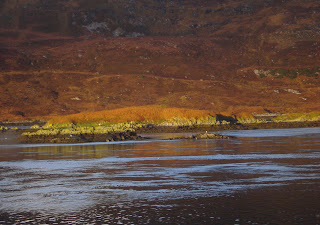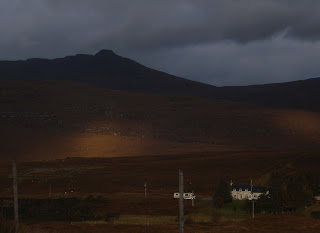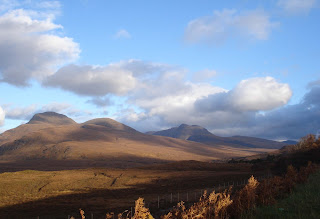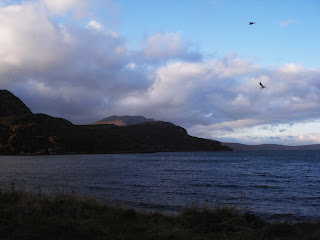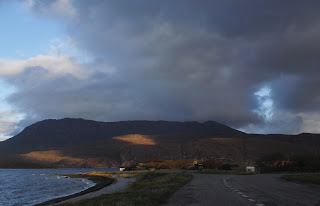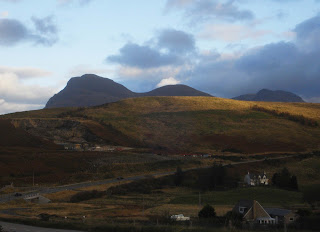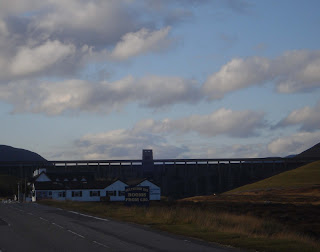Lindsay Townsend gave me 5 Stars!
here's her review of FAIR BORDER BRIDE
"A beautiful bride in a turbulent country....
From its fast-paced, compelling opening, 'Fair Border Bride' is an exciting historical romance set in the border lands of northern England in 1543. The romance of Alina and Harry is full of incident and tenderness and is a well-told story, with moments of humor, sensitivity and passion. They are sympathetic, rounded people and believable in their dilemmas and conflicts. The other characters in the novel are also very well-drawn, and the whole is filled with fascinating historical detail about a part of England that is rarely explored in Tudor historical fiction. If you want to lose yourself in vivid adventure and romance, I have no hesitation in recommending this novel by Jen Black."
******************************************************************
We arrived in Ullapool around 4pm. The journey took 7 hours, door to door. Not bad. I'm aware it probably doesn't sound much to those who live in larger countries, but France, Canada and the US have so much open space to build wide roads, whereas we're just a tiny bit cramped.
Ullapool looked as gorgeous as ever as we drove down Loch Broom and saw the buildings, shining white in the sun, sticking out into the middle of the water and with the hills rising behind. We’d booked at Waterside House on West Shore Street and stared straight down from our first floor window into Loch Broom.

They say Saint Maelrubha came here from Ireland around 722. Certainly the Vikings were at Ullapool. Their galleys rode at anchor in the fine anchorage of Tanera Mor, and by 1775 there were approximately twenty buildings and a road where West Argyle Street and West Terrace now stand. In 1698 a fishing station was set up at Ullapool with the intention of developing the export of salt herring from Wester Ross to Stockholm, London and France. Herring were so abundant in Lochbroom that the people were using them for manure but it was not until the growth of Glasgow as a port, and as a exporter of salt and dried fish across the Atlantic for the slave trade, that the commercial fishing of the remote north west coast became feasible.
If you want more history
click
We walked about, enjoying the crisp, bright sunshine. There are two good bookshops in Ullapool, and at least two shops selling expensive knitted fashion garments, three fish and chip places cafes, and numerous pubs offering meals. We settled on the Ceilidh Place, which always seems to have young staff from other parts of the world working there. We chose venison stew in red wine, and found it delicious.
click
 The gorse was blooming for the second time along the river banks in Ullapool, and I've just realised we weren't plagued by midgies at all. Our second night in Waterside House the wind kept the ferry in port and made walking out to find a meal unpleasant. We tried the Ceilidh Place but it was overun with young people, cables, sound systems and we dedeuced that a gig was taking place that night. I think we could have stayed, but it would have cost us £10 each on top of the bill for food and wine, and our eardrums are not accustomed to the atomic blasts of sound these groups generate. We found somewhere else!
The gorse was blooming for the second time along the river banks in Ullapool, and I've just realised we weren't plagued by midgies at all. Our second night in Waterside House the wind kept the ferry in port and made walking out to find a meal unpleasant. We tried the Ceilidh Place but it was overun with young people, cables, sound systems and we dedeuced that a gig was taking place that night. I think we could have stayed, but it would have cost us £10 each on top of the bill for food and wine, and our eardrums are not accustomed to the atomic blasts of sound these groups generate. We found somewhere else!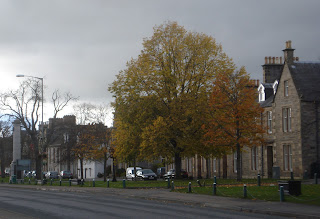
 Next day we set off back to Inverness and had a splendid drive across the moors and down through the autumn woods to Garve, where the land changes slowly into lowland scenery. Green, fertile and gentle after the north west. Climbing the hill out of Inverness heading south on the A9, we turned off onto the A938 and headed for Grantown on Spey, where we stopped, had a coffee and walked through the town and across the wetlands to the river Spey. Halfway around the town, our mobile phone rang and the family wished me happy birthday from Australia! Many years ago I'd been here, and remembered huge pine forests running down to the river, which tumbled over rocks at a huge rate of knots. The river we saw was a disappointment, and there were no pine trees. Instead we had to detour under a new by-pass that has been put in, and the river was flat, brown and uninspiring. Disappointment all around. They say you should never go back, don't they? So we headed out on the 939 through Lynemore and Bridge of Brown to Tomintoul. Pretty countryside, and so very different to the north west!
Next day we set off back to Inverness and had a splendid drive across the moors and down through the autumn woods to Garve, where the land changes slowly into lowland scenery. Green, fertile and gentle after the north west. Climbing the hill out of Inverness heading south on the A9, we turned off onto the A938 and headed for Grantown on Spey, where we stopped, had a coffee and walked through the town and across the wetlands to the river Spey. Halfway around the town, our mobile phone rang and the family wished me happy birthday from Australia! Many years ago I'd been here, and remembered huge pine forests running down to the river, which tumbled over rocks at a huge rate of knots. The river we saw was a disappointment, and there were no pine trees. Instead we had to detour under a new by-pass that has been put in, and the river was flat, brown and uninspiring. Disappointment all around. They say you should never go back, don't they? So we headed out on the 939 through Lynemore and Bridge of Brown to Tomintoul. Pretty countryside, and so very different to the north west!








